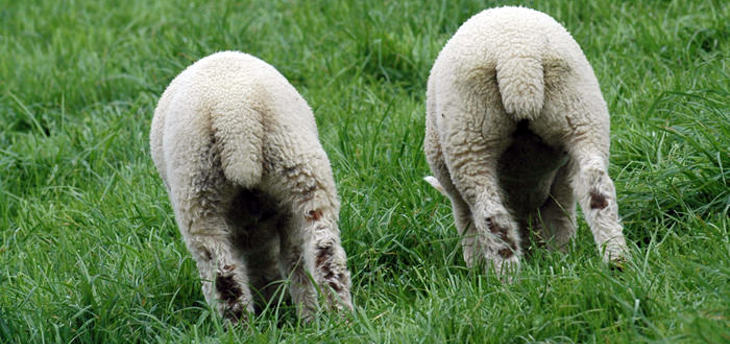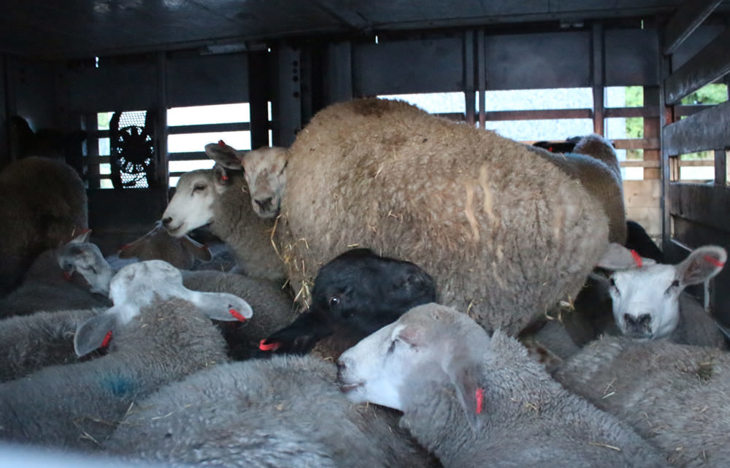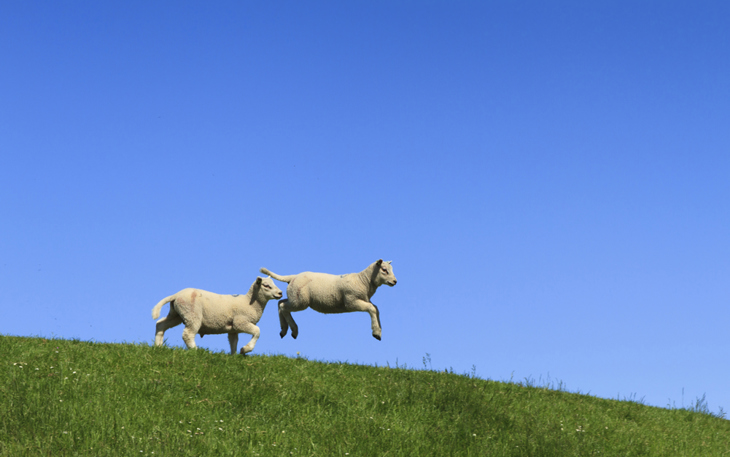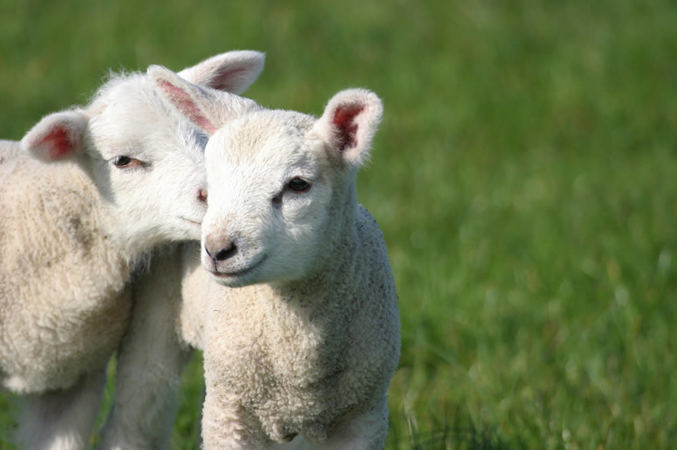Good animal welfare depends on three components:
- Physical well-being
- Mental well-being
- Natural living.
In lower welfare sheep farming, all three of these are compromised by mutilations, high lamb mortality rates, and during long distance transport – which can last days – for fattening and slaughter.
Welfare issues for sheep
The main welfare issues affecting sheep are from mutilations, lameness, transport and illness caused by disease. The health problems of sheep are largely treatable or avoidable with good grazing, breeding and stockmanship.
Mutilations
Lambs are routinely subjected to painful mutilations. The Farm Animal Welfare Council (FAWC) states that castration and tail docking of lambs “should not be undertaken without strong justification".
Castration
Many male lambs are castrated to prevent breeding, aid fattening and reduce aggression. Lambs are usually castrated by applying a tight ring, clamp or surgery. This is normally done without anaesthetic.
Tail docking

It is common for lambs to have their tails docked. This is partly to prevent the accumulation of faeces around the tail and reduce lesions and infections from flies. However, evidence shows that tail-docking is not necessary to maintain the health and welfare of lambs. Tail-docking is carried out with a knife, hot iron or tight ring around the tail.
Mulesing
Mulesing is the surgical removal of sections of skin from around the tail of a sheep, usually with no anaesthetic. Mulesing is often performed on Merino wool-producing sheep in Australia to reduce the incidence of flystrike – lesions and infections caused by blowflies. Anaesthetics and anti-inflammatories would significantly reduce pain while closer inspections of flocks, use of chemicals and breeding could reduce the use of mulesing altogether. Through voluntary industry agreements, mulesing has been largely phased out in New Zealand and progress is also being made towards phasing out the practice in Australia.
Ewes and lambing
Many ewes die during winter and spring because of poor body reserves to cope with winter and inadequate grazing. Many lambs are aborted or stillborn or die through disease, exposure and starvation. Multiple births are common in many modern sheep breeds and often result in problems for the ewe during delivery and produce more vulnerable lambs. In the UK, as many as 15% of lambs do not survive.
Transport

Live sheep and lambs are frequently transported on long journeys around the world. For example, each year, around 1.5 million sheep and lambs as young as four weeks old, are sent to Italy for slaughter from Hungary, Romania, Poland and Spain. On EU journeys legislation is frequently ignored with animals not given the rest, food and water required. Sheep are regularly transported in overcrowded trucks with insufficient headroom. In hot weather overcrowding can contribute to poor ventilation and sheep are often unable to access or use drinking devices.
You can help by choosing higher welfare alternatives.
Higher welfare alternatives for sheep
Most sheep are farmed in extensive systems, outdoors on pasture. However several million sheep are housed permanently indoors and some lambs are fattened indoors. When buying lamb, unless the label says ‘grass fed’ or ‘access to pasture’ sheep may have had no outdoor access. Organically farmed sheep graze on pasture throughout the grazing season.

Good stockmanship with good grazing regimes and strong breeds help ensure ewes remain healthy and improves lamb survival. Smaller numbers of sheep cared for by more shepherds allows proper supervision of the animals’ health and welfare. Provided that they are given sufficient care, ‘easy care’ breeds which are better able to look after themselves, can have many welfare advantages. They have fewer problems with lambing and are more resistant to fly strike so they don’t need to be tail docked. However, it is essential that sheep are given adequate supervision to ensure any welfare issues are quickly noticed and addressed.
Effective anaesthesia can be used to reduce the pain caused by mutilations such as castration, tail-docking and mulesing. These mutilations are often unnecessary and are not carried out in the highest welfare systems.
Use of chemicals and breeding could reduce the use of mulesing altogether and it is already being phased out in New Zealand and Australia.

